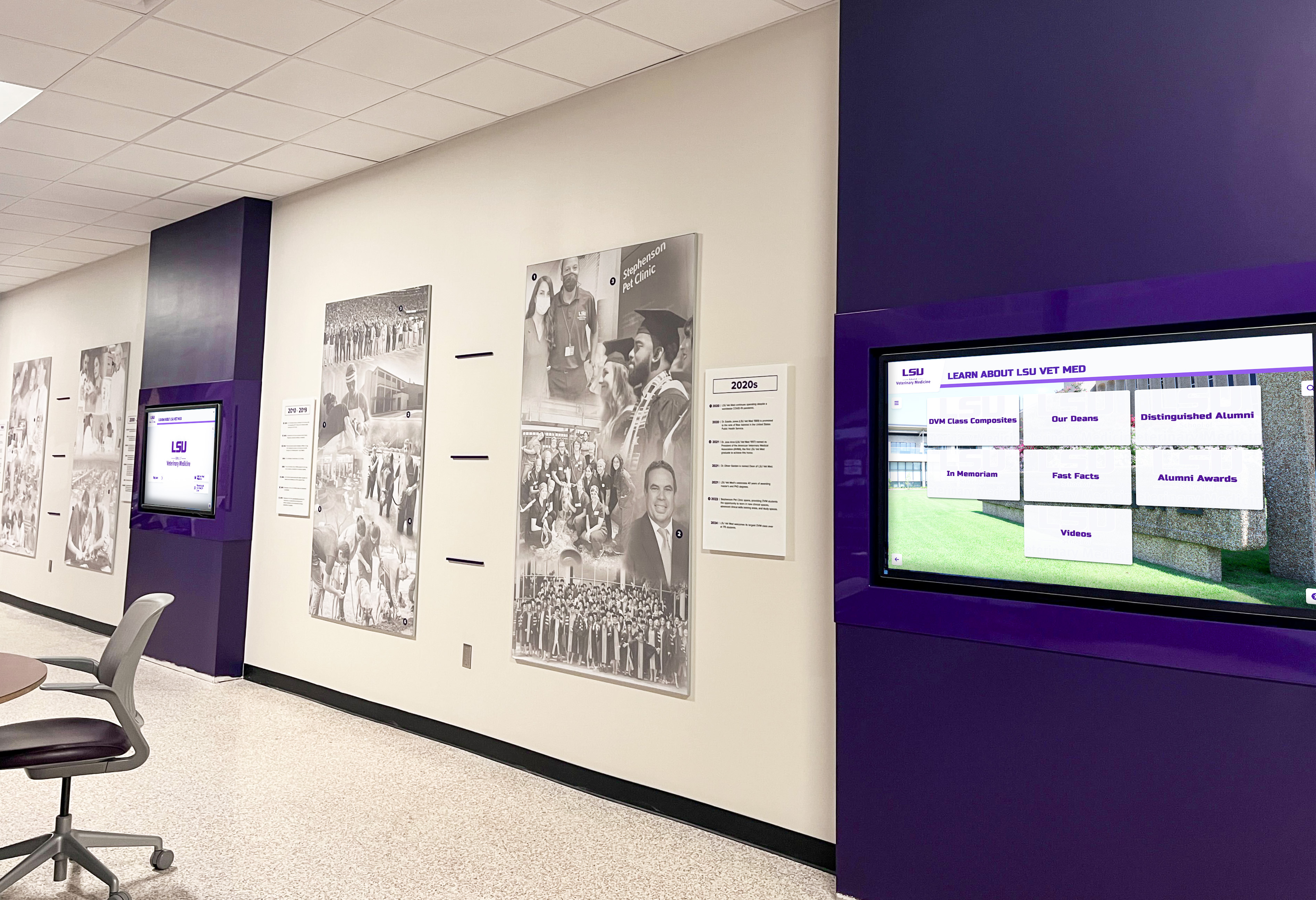Key Takeaways
Explore NFL Hall of Fames from the Pro Football Hall of Fame in Canton to team-specific halls. Learn about recognition, selection criteria, and digital displays.
The Pro Football Hall of Fame: Canton’s Crown Jewel
The Pro Football Hall of Fame in Canton, Ohio represents professional football’s most prestigious recognition institution. Established in 1963, this national shrine celebrates the greatest players, coaches, and contributors in NFL history, drawing hundreds of thousands of visitors annually who come to honor legends and experience football heritage.
Canton's selection as the home of professional football's hall of fame reflects the city's historical significance. The American Professional Football Association, which became the NFL, was founded in Canton in 1920. This historical connection makes Canton the spiritual home of professional football and the natural location for its greatest shrine.
The Pro Football Hall of Fame serves multiple vital functions:
- Preservation: Maintaining comprehensive records and artifacts documenting NFL history
- Recognition: Honoring the greatest contributors to professional football through permanent enshrinement
- Education: Teaching new generations about football's evolution, legends, and cultural impact
- Inspiration: Motivating current and future players by celebrating excellence standards
- Engagement: Creating immersive experiences that deepen fan connection to the sport
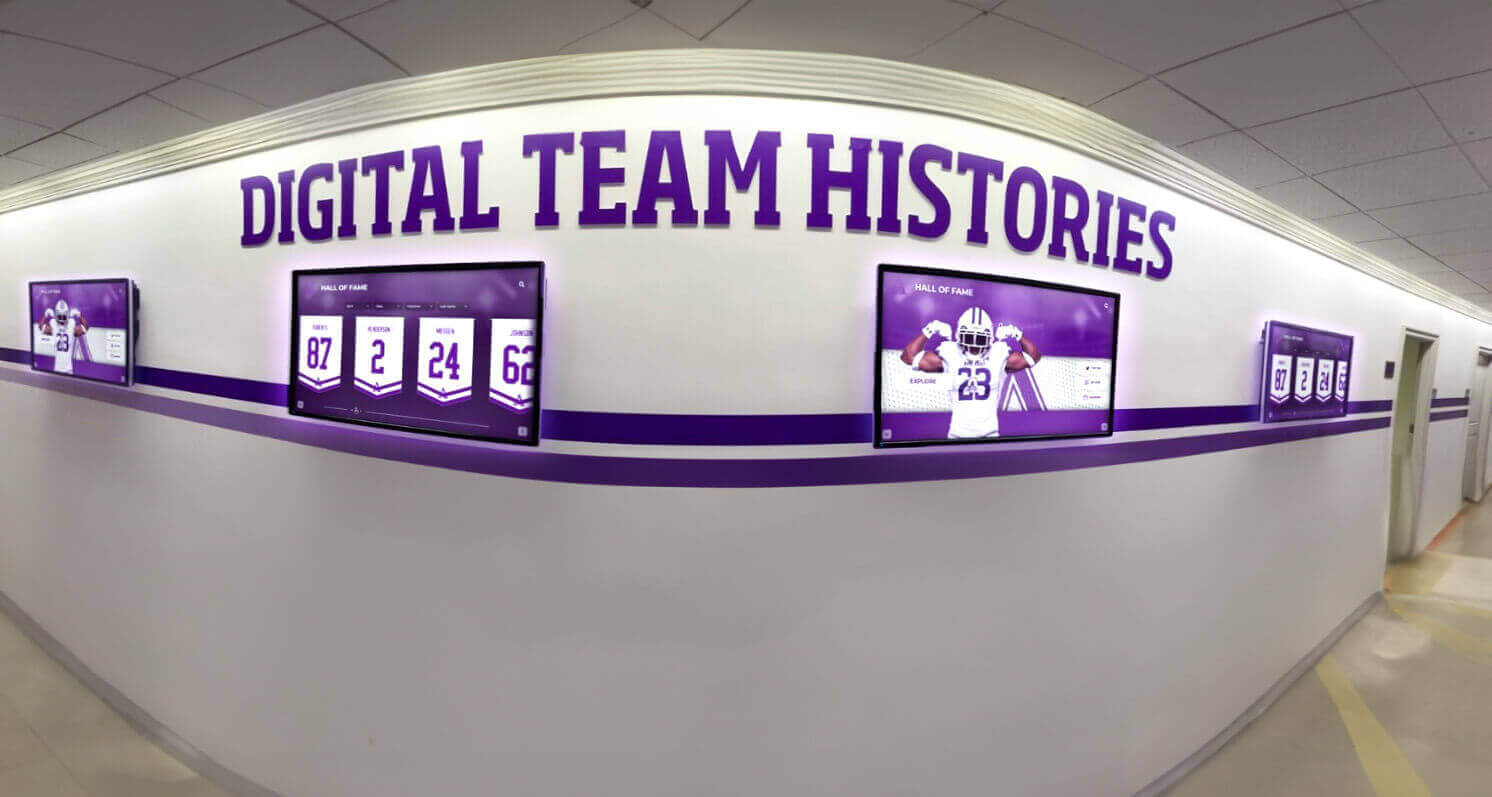
The Hall of Fame Selection Process
Enshrinement in Canton represents the pinnacle of professional football achievement. The selection process maintains rigorous standards ensuring only the most deserving individuals receive this ultimate honor.
Players become eligible five years after retirement from professional football. This waiting period allows proper perspective on career accomplishments and ensures candidates demonstrated sustained excellence rather than brief brilliance. Nominees must have made extraordinary contributions to professional football, demonstrating superior performance, character, integrity, sportsmanship, and significant impact on the sport.
The selection process involves several stages. The Pro Football Hall of Fame Selection Committee, comprising approximately 50 football writers and broadcasters, evaluates nominees. Each committee member represents a different NFL city plus national media outlets. In preliminary rounds, nominees are narrowed to 25 semifinalists, then 15 finalists. The final selection occurs the day before the Super Bowl, when committee members debate and vote on which finalists deserve enshrinement that year.

This thorough, deliberative process ensures hall of fame selection commands universal respect. The debate-and-vote structure allows committee members to advocate for deserving candidates while collective wisdom prevents questionable selections.
NFL Team Halls of Fame: Franchise-Specific Recognition
While the Pro Football Hall of Fame celebrates league-wide excellence, individual NFL teams maintain their own halls of fame honoring franchise legends. These team-specific recognition programs serve important functions in building and maintaining organizational identity and tradition.
Why NFL Teams Maintain Their Own Halls of Fame
🏆 Franchise Identity
Team halls of fame celebrate the specific players, coaches, and moments that define each organization's unique history and character.
🎯 Comprehensive Recognition
Many franchise legends who may not reach Canton still deserve recognition for outstanding contributions to their specific teams.
💪 Fan Engagement
Team halls provide gathering points for fans, creating connections between franchise history and current fan experience.
📚 Tradition Building
Recognition displays establish continuity across eras, linking past excellence with current rosters and future aspirations.
Team-specific recognition programs often incorporate principles seen in sports hall of fame design across various athletic organizations.
Notable NFL Team Hall of Fame Programs
Many NFL franchises have developed sophisticated hall of fame programs that honor their specific legends. The Dallas Cowboys Ring of Honor, installed in AT&T Stadium, provides visible recognition during every home game. The Green Bay Packers Hall of Fame features comprehensive exhibits celebrating the franchise’s storied history and legendary figures like Vince Lombardi, Bart Starr, and Brett Favre.

The Pittsburgh Steelers, San Francisco 49ers, Chicago Bears, and other storied franchises maintain similar programs, each reflecting their organization’s unique identity while serving common recognition purposes. These team halls complement the national Pro Football Hall of Fame by ensuring comprehensive celebration of football excellence at both league and franchise levels.
Selection Criteria: What Makes a Hall of Famer?
Understanding what separates hall of fame careers from merely excellent ones provides insight into football’s highest standards of achievement.

Player Selection Factors
Multiple dimensions contribute to hall of fame worthiness for players:
- Statistical Achievement: Career numbers that rank among the greatest at their position
- Championships and Postseason Success: Performance when stakes are highest
- All-Pro and Pro Bowl Recognition: Peer and media acknowledgment of elite status
- Position Value and Dominance: Impact relative to position importance
- Longevity and Consistency: Sustained excellence over extended careers
- Peak Performance: Periods of absolute dominance over the league
- Impact on Game Evolution: Changing how positions are played or valued
- Character and Sportsmanship: Representing the game with integrity
Coaches and Contributors
While players receive most hall of fame attention, coaches and contributors also earn recognition for exceptional impact on professional football. Coaches are evaluated on career winning percentage, championship achievements, innovation and strategic contributions, player development success, and lasting influence on the game.
Contributors represent a diverse category including team owners, general managers, commissioners, broadcasters, and others whose work significantly advanced professional football. Their contributions may involve building successful franchises, negotiating labor agreements, expanding the league, popularizing the sport through media, or developing player safety initiatives.
This comprehensive recognition approach ensures the hall of fame honors all essential contributions to professional football’s success, not just on-field performance.
The Modern Hall of Fame Experience
Contemporary hall of fame facilities have evolved far beyond simple plaques and memorabilia displays. Modern institutions create immersive, interactive experiences that engage visitors and bring football history to life.
Traditional vs. Interactive Recognition Approaches
Traditional Hall of Fame Elements
- Bronze Busts: Sculptural representations of inductees displayed in formal settings
- Exhibit Cases: Glass displays featuring jerseys, helmets, and personal memorabilia
- Wall Plaques: Formal recognition markers listing achievements and career highlights
- Video Theaters: Screening rooms showing career highlight films
- Timeline Displays: Chronological presentations of league and franchise history
Interactive Digital Features
- Searchable Databases: Comprehensive player statistics and biographical information
- Interactive Touchscreens: Allow visitors to explore content at their own pace
- Virtual Reality Experiences: Immersive simulations of historic games and moments
- Social Media Integration: Enable visitors to share favorite moments and players
- Dynamic Content Updates: Keep displays current with recent inductees and news
- Personalized Tours: Customized experiences based on favorite teams or players
Professional sports facilities increasingly adopt digital hall of fame technology that enhances visitor engagement while providing unlimited recognition capacity.
Interactive Elements That Enhance Engagement
Modern hall of fame facilities incorporate numerous interactive features that deepen visitor experiences. Visitors can test their football knowledge through trivia challenges, compare their physical measurements and abilities to professional athletes, watch 360-degree video from player perspectives during famous plays, explore detailed play diagrams explaining historic strategic innovations, and create personalized highlight reels featuring their favorite players.
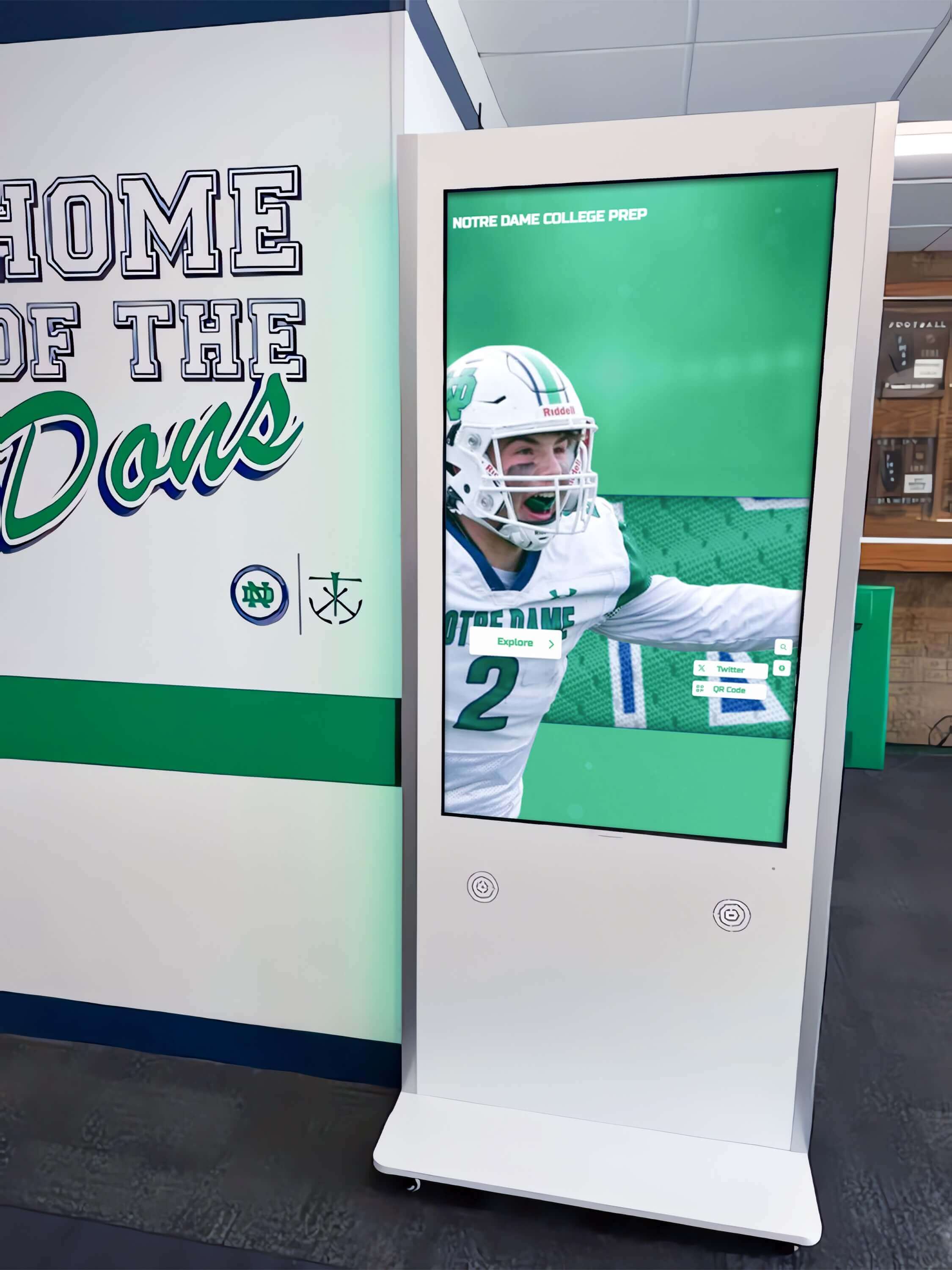
These interactive elements particularly engage younger visitors who expect technology-enhanced experiences. By making hall of fame visits participatory rather than purely observational, modern facilities create memorable experiences that build deeper connections to football history and legends.
Legendary Inductees: Icons Who Defined Eras
The Pro Football Hall of Fame’s roster of inductees reads like a who’s who of American sports legends. These iconic figures didn’t just play football exceptionally—they defined eras, changed how positions were played, and became cultural figures transcending sports.
Offensive Legends
Professional football’s greatest offensive players transformed the game through exceptional skill and innovation. Quarterback legends include names like Johnny Unitas, who revolutionized the passing game; Joe Montana, whose clutch performances defined championship excellence; and Tom Brady, whose unprecedented seven Super Bowl championships and longevity rewrote record books.
Running backs who earned enshrinement include Jim Brown, whose combination of power and speed set new standards; Walter Payton, whose complete skill set and durability became the gold standard; and Barry Sanders, whose elusive running style created highlight-reel magic. Wide receivers like Jerry Rice, whose work ethic and route precision established unreachable receiving records, join this pantheon of offensive excellence.
Defensive Dominance
While offense attracts attention, defensive legends equally shaped professional football history. Defensive linemen like Reggie White, whose combination of size, speed, and technique revolutionized pass rushing, earned hall of fame recognition alongside Lawrence Taylor, whose linebacker play changed defensive strategy across the league.
Defensive backs including Ronnie Lott, whose intimidating physicality defined hard-hitting safety play, and Deion Sanders, whose coverage ability allowed defenses to employ aggressive schemes, represent the secondary's greatest contributors. These defensive legends proved that championship teams are built as much on preventing scores as creating them.

Coaching Legends
Great coaches shaped professional football through strategic innovation, program building, and leadership excellence. Vince Lombardi became synonymous with winning, his name adorning the Super Bowl trophy. Bill Belichick’s sustained excellence across multiple decades established new standards for coaching achievement. Don Shula’s record for career coaching victories and the 1972 Dolphins’ perfect season secured his legendary status.
These coaching icons demonstrated that intellectual excellence, leadership ability, and strategic mastery equal physical talent in determining championship success. Their influence extends beyond their own careers through coaching trees spreading their philosophies across the league.
The Hall of Fame Selection Debates
Not all hall of fame decisions come easily. Some candidates generate intense debate, revealing how people weigh different achievement factors and what excellence standards should prevail.
Factors That Complicate Selection
Several factors create hall of fame selection challenges. Players whose peak performance ranked among the greatest ever but whose careers were shortened by injury present difficult questions about longevity requirements. Should absolute peak excellence outweigh sustained duration, or does hall of fame status require both?
Statistical achievements in different eras complicate comparisons. How should committees compare players who competed before rules emphasized offense with modern players whose statistics benefited from protective rules? Position value also generates debate—should standards vary by position, recognizing that some positions carry greater team impact than others?
Character concerns occasionally arise. When players compiled hall of fame-worthy statistics but faced serious off-field issues, committees must decide how heavily to weight conduct against achievement. These difficult cases reveal tension between honoring athletic excellence and celebrating role models.

The “Hall of Very Good” Debate
Some excellent players generate recurring hall of fame discussions despite falling just short of selection. These “Hall of Very Good” candidates compiled impressive careers and earned All-Pro recognition but lack the statistical or championship credentials that define Canton’s standards. Their recurring nominations spark debates about whether hall of fame standards should broaden or maintain current selectivity.
These debates serve important functions, forcing ongoing examination of what separates good from great and great from legendary. The discussions themselves honor these near-miss candidates while maintaining the hall of fame’s prestige through selective standards.
How NFL Recognition Influences Athletic Programs
Professional football’s approach to recognition influences athletic programs across all levels. The standards, traditions, and presentation methods pioneered in NFL hall of fame programs shape how schools, colleges, and communities recognize their own athletic excellence.
Professional Football's Recognition Legacy
Principles Applied Across Athletic Recognition
- Clear Standards: Transparent selection criteria that command community respect
- Comprehensive Coverage: Recognition spanning players, coaches, and contributors
- Ceremony Importance: Formal induction events that honor achievement appropriately
- Permanent Display: Visible recognition accessible to community members
- Historical Context: Presentation that educates about achievement significance
- Ongoing Engagement: Programs that maintain inductee connections
Schools and organizations implementing these professional principles create recognition programs that command similar respect and achieve comparable engagement. Many educational institutions adopt football recognition approaches inspired by professional standards.

From Professional Standards to Educational Programs
Educational athletic programs benefit from adapting NFL recognition principles to their contexts. High schools and colleges implementing structured hall of fame programs with clear selection criteria, formal induction ceremonies, and permanent recognition displays report numerous benefits including enhanced alumni engagement and donor support, increased student athlete motivation and program pride, preserved institutional history across generations, and strengthened community connections to athletic programs.
Solutions like Rocket Alumni Solutions enable schools and colleges to implement professional-quality recognition displays that honor their athletic traditions while maintaining practical budgets and management requirements. These systems incorporate the engagement features and unlimited capacity that make modern recognition effective.
Digital Recognition Technology for Sports Programs
Technology has revolutionized how organizations recognize athletic excellence, offering capabilities impossible with traditional static displays.
Implementing Digital Recognition Systems
Assess Needs
Evaluate recognition requirements, available space, budget parameters, and desired features

Select Technology
Choose appropriate display hardware, software platforms, and content management systems

Gather Content
Compile inductee information, photographs, videos, statistics, and historical narratives

Design Experience
Create intuitive navigation, engaging layouts, and compelling content presentation

Install System
Mount displays, configure software, test functionality, train staff on management

Launch and Maintain
Unveil recognition display, promote to community, update regularly with new content

Organizations implementing digital recognition technology gain numerous advantages including unlimited recognition capacity unconstrained by physical space, easy content updates adding new inductees without renovation, rich multimedia integration with photos, videos, and interactive elements, searchable databases enabling quick information discovery, and remote access extending engagement beyond physical location.
Advantages for Athletic Programs
Schools, colleges, and sports organizations implementing digital recognition displays modeled on professional approaches report significant benefits. These systems allow comprehensive recognition of deserving individuals without difficult choices imposed by space limitations. Organizations can honor athletes, coaches, contributors, teams, and special achievements within unified platforms.
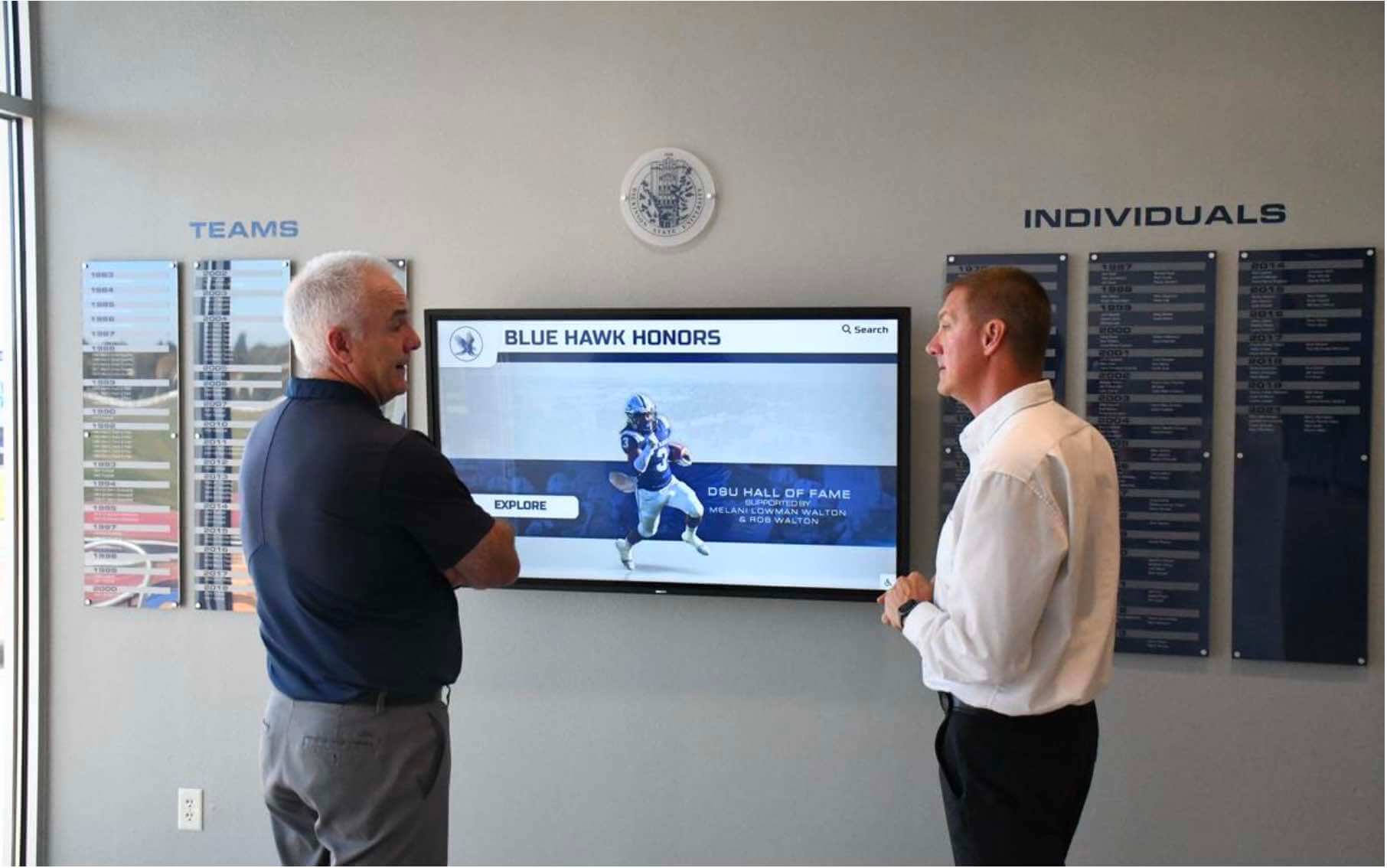
Content management simplicity means athletic staff can update displays themselves without technical expertise or expensive professional services. This accessibility ensures recognition remains current as new inductees join programs annually. The multimedia capabilities create engaging experiences that resonate particularly with younger visitors accustomed to interactive digital content.
Many organizations find that digital trophy displays effectively showcase achievements previously hidden in storage due to physical space constraints.
The Cultural Impact of NFL Hall of Fame Recognition
Professional football hall of fame recognition extends beyond sports into broader American culture. Enshrinement creates lasting legacies, influences popular culture, and shapes how society values excellence and achievement.
Hall of Fame as Cultural Institution
The Pro Football Hall of Fame functions as more than a sports museum—it serves as a cultural institution reflecting American values and aspirations. The recognition celebrates merit-based achievement regardless of background, demonstrating that excellence and dedication can elevate individuals from any circumstance to the highest honor.
Beyond Football: Broader Impact
Hall of fame inductees often become cultural ambassadors extending their influence beyond football. Many leverage platform and recognition for:
- Philanthropy: Establishing charitable foundations addressing community needs
- Youth Development: Creating programs that mentor young people through sports
- Social Advocacy: Championing causes and bringing attention to important issues
- Business Leadership: Applying lessons learned through football to entrepreneurship
- Broadcasting: Educating new generations about football as media personalities
This broader impact demonstrates how athletic excellence creates platforms for positive influence that extends far beyond playing careers.

Inspiration Across Generations
Hall of fame recognition creates inspiration that motivates future generations. Young athletes learn about legendary players who overcame obstacles, demonstrating that dedication and perseverance can achieve remarkable results. These stories become motivational narratives that extend beyond sports into broader life lessons about goal-setting, resilience, and excellence pursuit.
Parents and coaches reference hall of fame standards when teaching young athletes about commitment, sportsmanship, and character. The recognition becomes a teaching tool demonstrating that how individuals achieve success matters as much as the achievement itself.
Creating Football Recognition at All Levels
While the Pro Football Hall of Fame represents the sport’s pinnacle, effective football recognition exists at all competitive levels from youth leagues through professional ranks.
Youth and High School Recognition
Youth football organizations and high schools implementing structured recognition programs create positive impacts including increased player motivation and program engagement, stronger community support and volunteer involvement, preserved program history for future generations, and enhanced player development through positive goal-setting.
Many successful high school football programs maintain hall of fame recognition that celebrates legendary players, championship teams, and coaching excellence. These programs adapt professional recognition principles to their contexts while maintaining appropriate scale and budget consciousness. Resources on high school football recognition provide practical implementation guidance.
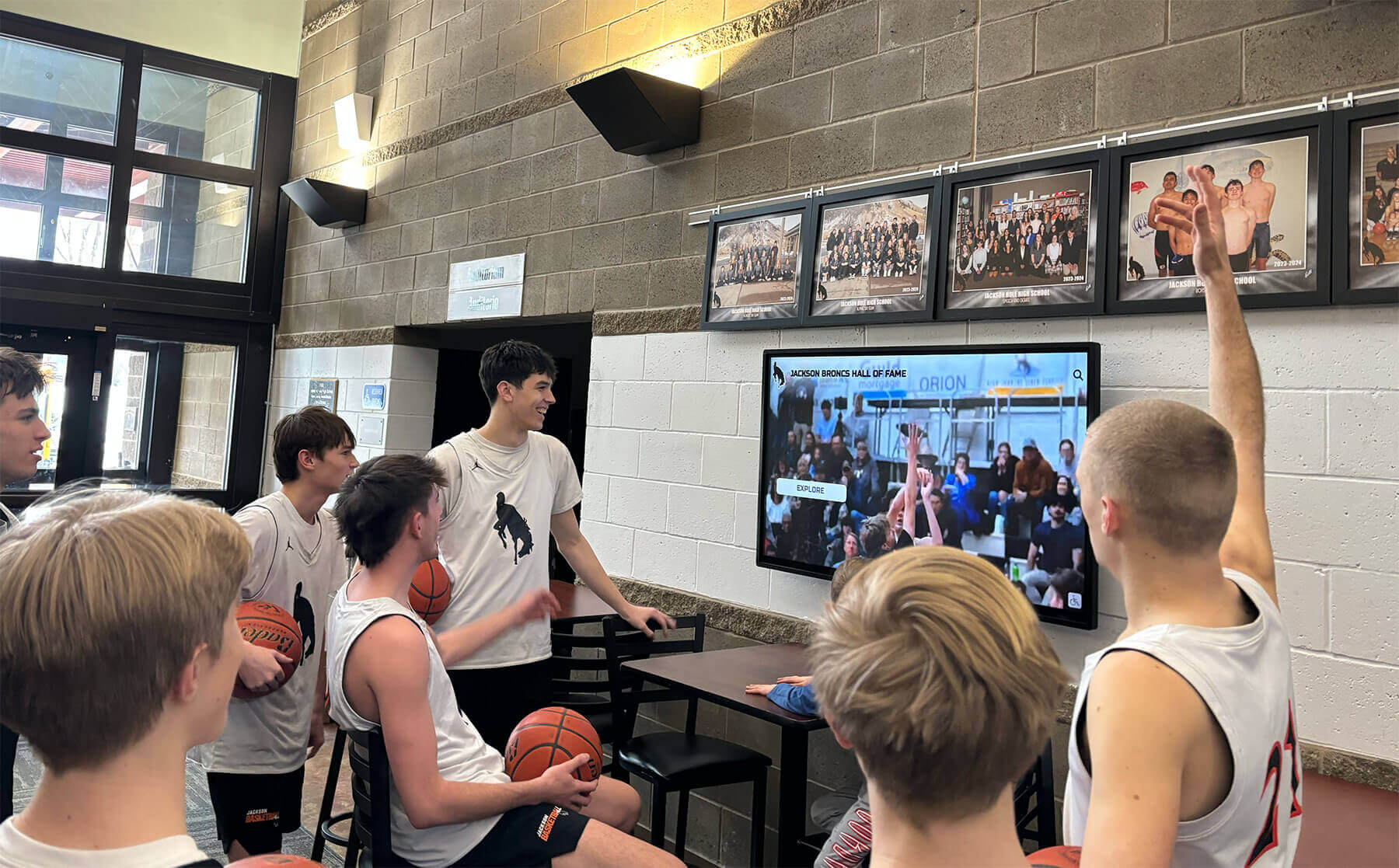
College Football Recognition
College football programs occupy the middle ground between high school and professional football, often maintaining sophisticated recognition systems that rival professional standards. Major college programs typically operate comprehensive halls of fame celebrating All-Americans, conference champions, award winners, and legendary coaches.
These college recognition programs serve important functions in recruiting, alumni engagement, and program identity building. Prospective student athletes visiting campuses experience program tradition through recognition displays that showcase the excellence standards and historical significance of programs they’re considering joining.
Understanding college athletics hall of fame best practices helps institutions create recognition programs that effectively honor their football traditions.
The Business of Hall of Fame Recognition
Hall of fame institutions operate as significant business enterprises involving substantial budgets, staffing, and economic impact considerations.
Economic Impact
The Pro Football Hall of Fame generates substantial economic impact for Canton and the surrounding region. The facility attracts hundreds of thousands of visitors annually, generating hotel bookings, restaurant traffic, and retail spending. The annual Hall of Fame Game and Enshrinement Festival create concentrated economic activity bringing tens of thousands of visitors to the region.
Team-specific hall of fame facilities similarly drive economic activity through game-day foot traffic and tourist visits. Organizations recognize that quality recognition displays serve both honorific and practical business purposes by enhancing visitor experiences and creating compelling reasons for facility visits.
Sponsorship and Revenue Generation
Modern hall of fame facilities increasingly incorporate sponsorship arrangements that generate operating revenue while enhancing visitor experiences. Corporate partners may sponsor specific exhibits, digital interactivity features, educational programs, or special events. These partnerships provide financial resources supporting facility operation and enhancement while offering sponsors association with positive brand attributes like excellence, tradition, and achievement.
Organizations implementing recognition programs should consider sustainable revenue models including admission fees for extensive facilities, gift shop operations featuring branded merchandise, special event hosting generating rental and catering revenue, and corporate sponsorship arrangements supporting operations and enhancements.
Future Trends in Football Recognition
Technology advancement and changing expectations continue reshaping how organizations recognize football excellence, with several emerging trends likely to influence future recognition programs.
Emerging Recognition Technologies
Current Standard Approaches
- Physical Displays: Traditional plaques, busts, and trophy cases
- Basic Touchscreens: Simple interactive kiosks with limited content
- Video Displays: Pre-programmed highlight reels on loop playback
- Static Websites: Basic online information without interactive features
- Print Materials: Program guides and brochures for visitors
Next-Generation Innovations
- Augmented Reality: Overlay digital content on physical spaces through mobile devices
- Artificial Intelligence: Personalized content recommendations based on interests
- Virtual Reality: Immersive experiences recreating historic games and moments
- Blockchain Verification: Digital authentication of memorabilia and achievements
- Holographic Displays: Three-dimensional projections of inductees and highlights
- Interactive Voice: Conversational interfaces for information discovery
Organizations planning long-term recognition investments should consider emerging technologies that may enhance engagement and ensure systems remain current as visitor expectations evolve.
Expanding Recognition Scope
Future recognition programs may expand beyond traditional player and coach focus to celebrate broader contributions. Enhanced recognition of front office personnel, medical and training staff, equipment managers and support personnel, media professionals covering teams, and fan communities supporting programs could create more comprehensive celebration of all contributors to football success.
This expanded recognition philosophy acknowledges that championship teams and successful programs depend on numerous individuals beyond those on sidelines and playing fields.
Implementing Professional-Quality Recognition
Schools, colleges, and sports organizations can create football recognition programs that honor their traditions while maintaining manageable budgets and operational requirements.
Keys to Successful Recognition Programs
Effective recognition programs share common characteristics regardless of competitive level or organizational size. Clear selection standards establish transparent criteria that command community respect and prevent controversy. Formal ceremonies provide appropriate honor to inductees while creating community gathering opportunities. Permanent displays ensure recognition remains visible and accessible rather than being limited to one-time acknowledgment.
Ongoing maintenance keeps recognition current through regular updates, new inductee additions, and content refreshment. Community involvement in selection and celebration builds broader investment in program success. Documentation preserves institutional memory through comprehensive records and archives.
Organizations implementing these principles create sustainable recognition programs that honor excellence across decades while adapting to changing technology and community expectations.

Working with Recognition Partners
Many organizations find that partnering with experienced recognition solution providers enables professional-quality results without requiring internal expertise in display technology, content management systems, or interactive design. Solutions like Rocket Alumni Solutions provide comprehensive support including needs assessment and planning, hardware and software selection, content development assistance, installation and configuration, staff training on system management, and ongoing technical support and updates.
These turnkey approaches allow organizations to focus on selection standards, inductee identification, and community engagement while recognition partners handle technical implementation. The result is professional-quality recognition systems that organizations can manage independently after initial setup and training.
Conclusion
NFL Hall of Fames represent more than recognition institutions—they serve as guardians of professional football heritage, inspiration sources for future generations, and powerful demonstrations of what dedication and excellence can achieve. From the prestigious Pro Football Hall of Fame in Canton to individual team halls celebrating franchise legends, these recognition programs create vital connections between past achievement and future aspiration.
The principles, standards, and presentation methods pioneered in professional football recognition influence athletic programs across all competitive levels. Schools, colleges, and sports organizations implementing structured recognition programs adapted from professional models create similar benefits including preserved institutional history, enhanced community engagement, increased participant motivation, and strengthened organizational identity.
Modern recognition technology enables organizations of all sizes to implement professional-quality recognition displays that honor their football traditions effectively. Digital recognition systems provide unlimited capacity for comprehensive recognition, easy content management supporting ongoing updates, rich multimedia integration creating engaging experiences, and remote access extending engagement beyond physical facilities.
Whether honoring legends in Canton's sacred halls or celebrating high school football excellence through local recognition programs, the fundamental mission remains constant: preserving the stories of remarkable individuals whose dedication, talent, and achievement elevated football programs and inspired others through their example. By maintaining these recognition traditions and adapting them thoughtfully for contemporary contexts, organizations ensure that excellence receives appropriate celebration while future generations understand the standards that define greatness.
Solutions like Rocket Alumni Solutions provide schools and sports organizations with practical tools for implementing professional-quality recognition displays that honor athletic excellence while remaining manageable within typical budgets and staffing constraints. These systems bring the engagement, comprehensiveness, and professional presentation of major hall of fame facilities to organizations at all levels, ensuring that every deserving individual receives appropriate recognition regardless of organizational size or resources.
